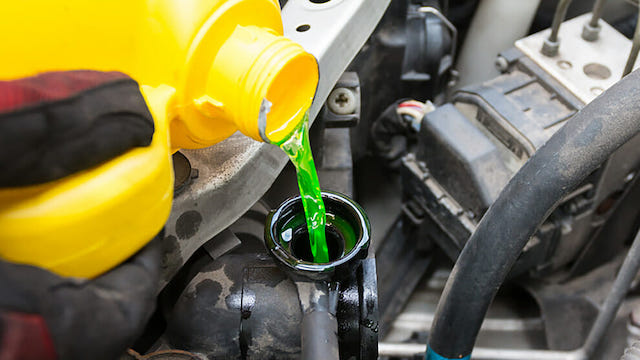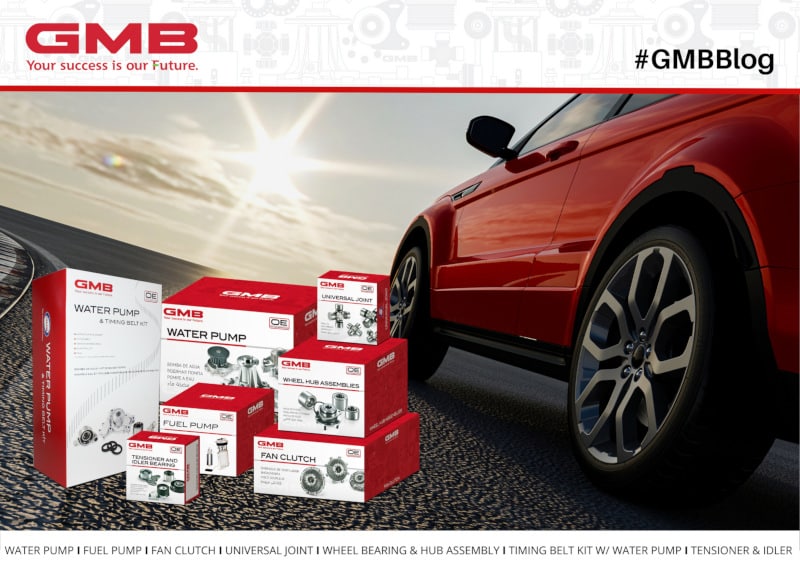Common Questions Consumers Have About Coolant (And Answers)
Did you know that coolant is one of the most ignored fluids in a car? Even though coolant is supposed to be maintained and replaced regularly, a lot of drivers don’t pay attention to the coolant in their cars for years.
This is largely because a lot of drivers don’t understand what coolant is and how important it is to maintain it. That’s why it’s important for you as a service advisor or technician to educate your customers about coolant and encourage them to change it when appropriate.
Below are the most common coolant-related questions customers ask. By answering these questions, you can help your customers keep their cooling systems in tip-top shape.
1. Is Coolant Flammable or Toxic?

The answer is yes. Coolant is both flammable and toxic.
- Flammable: It might seem strange that coolant, which contains water, is flammable, but it is. In fact, it will auto-ignite on a hot surface. So if enough coolant leaks on to the engine while the engine’s running, a fire could occur.
- Toxic: Antifreeze is very toxic to humans and animals when ingested. It isn’t really dangerous topically (unless you’re allergic to antifreeze), though. Antifreeze contains glycolic acid and oxalic acid, both of which are harmful when swallowed.
What about antifreeze? Is antifreeze flammable? The answer is also yes because antifreeze is the flammable component of coolant. Since coolant is a toxic and flammable liquid that needs to be disposed in a hazardous waste facility, many car owners feel uncomfortable draining the coolant out of their cooling systems themselves. It’s important for your customers to know how dangerous coolant is and how imperative it is to handle it correctly. You can use the opportunity to offer to take care of coolant changes for them.
2. Is Coolant Corrosive?
Coolant used to be corrosive, but not anymore. However, modern coolant will become acidic over time. As a result, it will no longer prevent rust buildup within the cooling system. That’s one of the reasons why it’s important to change the coolant regularly.
3. Is Coolant Oily or Made From Oil?
No. There’s no oil in coolant whatsoever. However, coolant lubricates the water pump seal. It loses the ability to lubricate the water pump seal as it ages. This is another reason why it’s important to change the coolant on a regular basis.
4. Is Coolant the Same Thing as Antifreeze?

No, it’s not the same thing. Coolant is the combination of antifreeze and water. Antifreeze is concentrated and it should never be used alone. You always have to mix it with water. It’s because a mixture of water and antifreeze will freeze at a lower temperature than pure antifreeze. Also, running pure antifreeze through your cooling system may damage the engine.
The right combination of antifreeze and water has to be added to a vehicle in order to keep the cooling system running properly. If the customer isn’t sure how to mix the antifreeze and water together correctly, you can assure them that having your shop do it for them will give them the peace of mind that it’s done right each and every time.
5. Is Coolant Universal or Car Specific?
Coolant is car specific. It’s because each car’s cooling system requires a certain type of coolant. Auto manufacturers choose the coolant based on the types of materials the coolant will come into contact with in the cooling system. Using the wrong coolant can cause gaskets to leak or cause corrosion. In fact, auto manufacturers will void your warranty if you use the wrong coolant.
Some types of coolant are not compatible with other types. Mixing incompatible coolants together can cause sludge in the cooling system. That’s why some automakers void the warranty if they find the wrong type of coolant in the cooling system.
6. Is Coolant Red, Pink, or Green?

All of the above. Coolant comes in many different colors, including blue, green, red, pink, yellow, and purple. There are several different types of coolant (IAT, OAT, and HOAT), and each type has its own range of colors. IAT coolant is the typical green coolant. OAT is traditionally orange or red, but can also be green, pink, or blue. OAT is an extended life coolant that can last up to 5 years or 150k miles, and it cannot be mixed with any other type of coolant. HOAT coolant is a hybrid of IAT and OAT and is typically orange or yellow. HOAT coolants can be mixed with each other but not IAT or OAT coolant.
It’s very important to stick with the type of coolant that the OEM specified. If you have a customer who accidentally put in the wrong coolant, flush it out right away and fill it up with the right coolant.
MORE CONTENT
Stay current!
Sign up here to get the latest news
and updates on all things GMB.
Sign Up To Receive GMB News & Updates!

